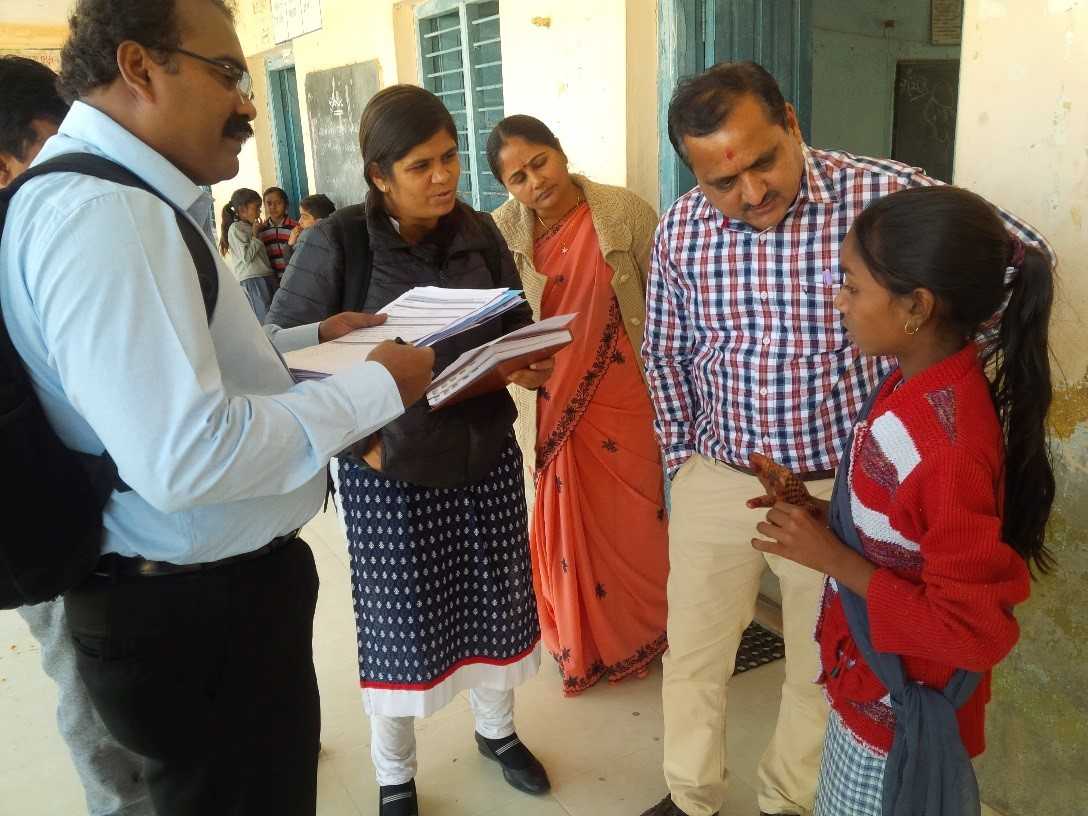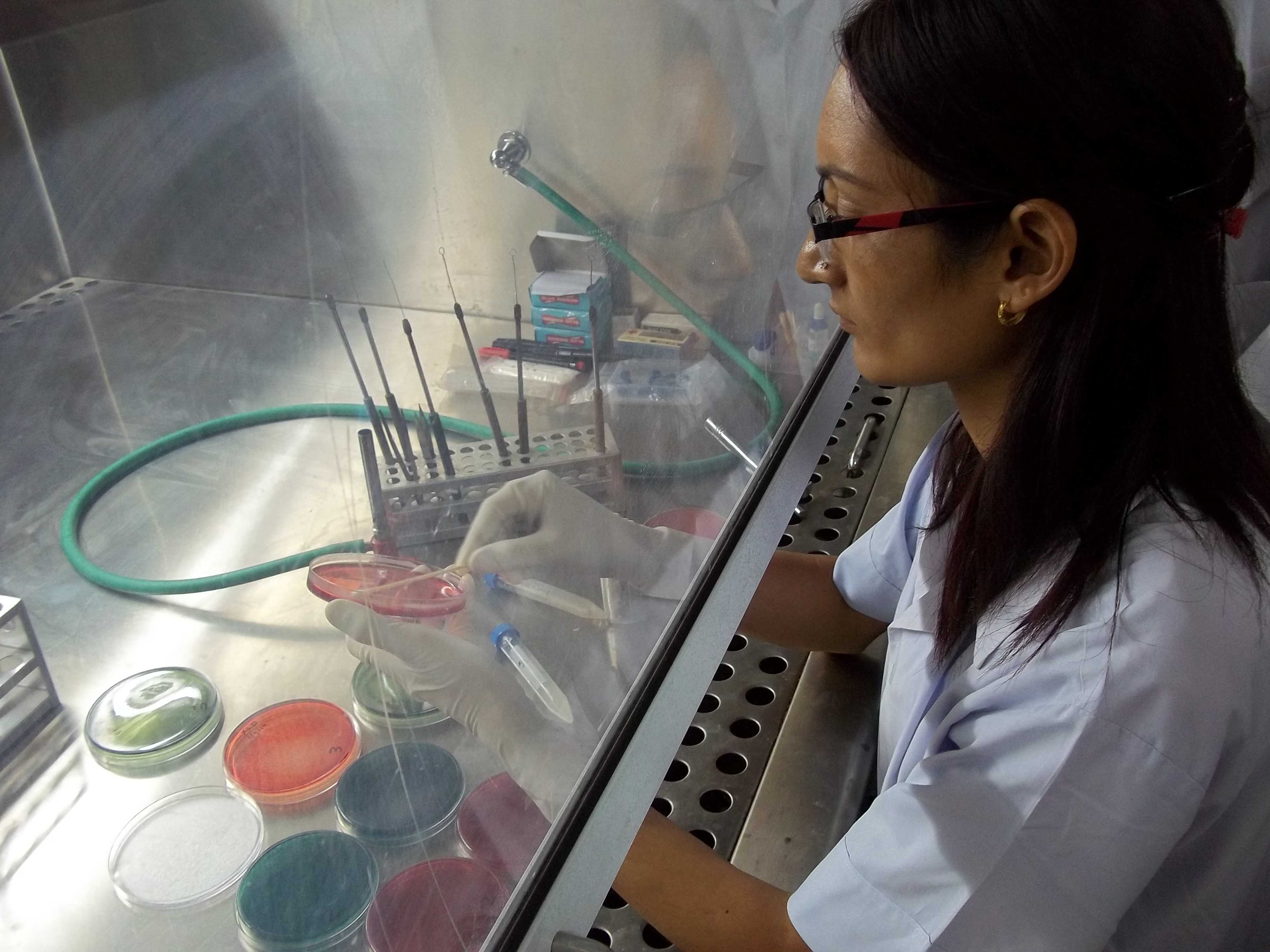Global Disease Detection Stories: Coordinated Outbreak Response Puts Diarrhea on the Run
Globally, there are nearly 1.7 billion cases of diarrheal disease every year. In India, the problem is widespread: acute diarrheal diseases and food poisoning routinely account for over 40% of infectious disease outbreaks.

An India EIS officer helps the district rapid response team take interviews after a food poisoning outbreak in Gujarat. Photo courtesy of Mayank Dwivedi.
People think of their wedding day as the happiest day of their lives. In India, weddings often include several days of festivities with friends and family. Symptoms like “abdominal pain,” and “vomiting” are unwanted guests, but they crashed one wedding party in Gujarat State.
Fortunately, India is committed to strengthening outbreak response and surveillance for acute diarrheal and foodborne diseases. Within 24 hours, four people were deployed to conduct an investigation to find the cause of the wedding outbreak. Two investigators were Indian EIS Officers and two were from the U.S. Centers for Disease Control and Prevention (CDC). Combining forces, they surveyed households to track down nearly 400 wedding guests from four villages to identify potential cases and get more information about foods the sick guests ate. Ninety-two people reported symptoms and eight were hospitalized.
Spoiled milk
The culprit? The team traced the likely source of the outbreak to basundi, a dessert made of condensed milk topped with dry fruit and served cold. The officers discovered there was a 10-hour power outage two days before the wedding that affected the dairy where the milk was purchased.
Practice makes perfect

Laboratorian receives training through the Global Acute Diarrheal Disease pilot project.
Solving foodborne outbreaks is not easy. It takes training, patience, practice, and many partners. Thanks to a longstanding scientific collaboration known as the Global Foodborne Infections Network, countries, including India, are getting the tools and relationships they need to solve outbreaks. Epidemiologists, microbiologists, lab technicians, and healthcare staff are trained and mentored on procedures for stool specimen collection, transport, laboratory testing, and reporting.
The key to cracking foodborne outbreaks is testing stool specimens from sick people. In two years, as part of a pilot project, over 30 outbreaks have been detected and reported in four districts; 2000 samples have been properly collected, transported, and tested. Clinical specimens were tested in 75% of those outbreaks—results that are on par with the best standards in the world.
Plans are being discussed to double the number of districts and add activities. With better ability to track, test for, and prevent foodborne illnesses, gatherings all over India could turn away uninvited bacterial guests.
Progress in tracking and responding to acute diarrheal disease and outbreaks in India is thanks to the Global Acute Diarrheal Disease Pilot Project in partnership with CDC’s Division of Foodborne, Waterborne, and Environmental Disease, The Global Foodborne Infections Network, and India’s National Centre for Disease Control’s Integrated Disease Surveillance Program. This work is coordinated through the GDD Center in India, which is part of CDC’s country office. India is one of 30 U.S. partner countries named in the Global Health Security Agenda.
- Page last reviewed: December 11, 2015
- Page last updated: December 11, 2015
- Content source:


 ShareCompartir
ShareCompartir